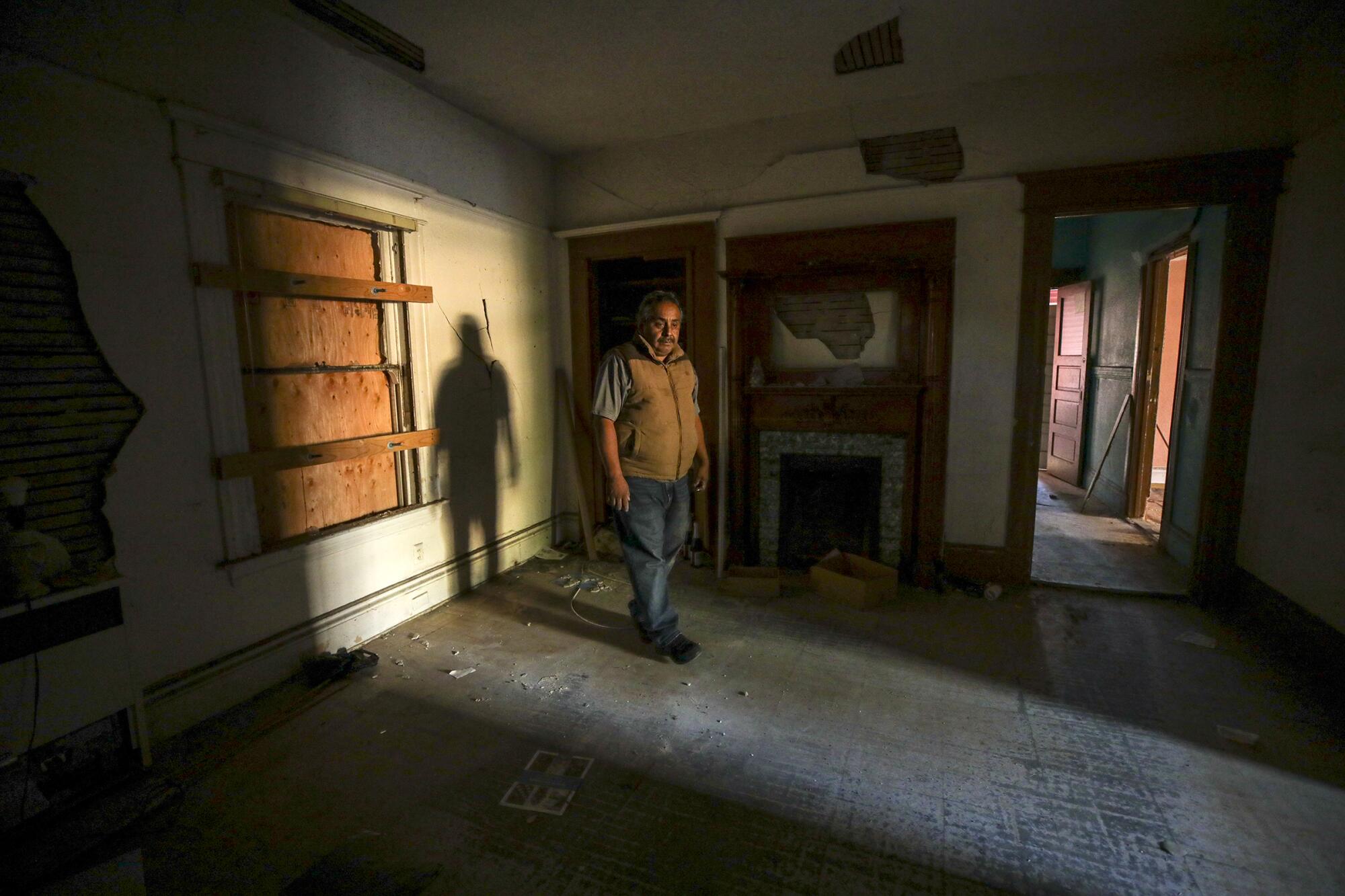
- Share via
Juana Oceguera and her five children piled out of a minivan and U-Haul truck that held most of what they owned. They gathered outside of a two-story house whose yards were made up of rocks and dirt. A lone Joshua tree stood across the street.
“This is like a whole desert,” observed 10-year-old Xóchitl Martinez. The western Mojave Desert, to be exact.
It took a violent explosion — courtesy of a huge cache of fireworks and an ill-conceived LAPD operation that injured people and damaged homes — for the family to end up in a house of their own, 75 miles away from their South L.A. neighborhood.
Oceguera had looked at dozens of apartments in L.A., hoping to stay in the city where she’d raised her children. But the rents were too high and the space they offered too small.
“It was the last option we had. Get the house and move far away,” Oceguera said. “We have to start over again.”
The explosion’s aftermath underscored a painful truth about life in sprawling, expensive Los Angeles, a region where formerly working-class neighborhoods are rapidly gentrifying as the population grows but the available housing stock does not. This divide between rich and poor became even more apparent to the many displaced by the summer disaster when they were temporarily housed in a luxury downtown hotel.
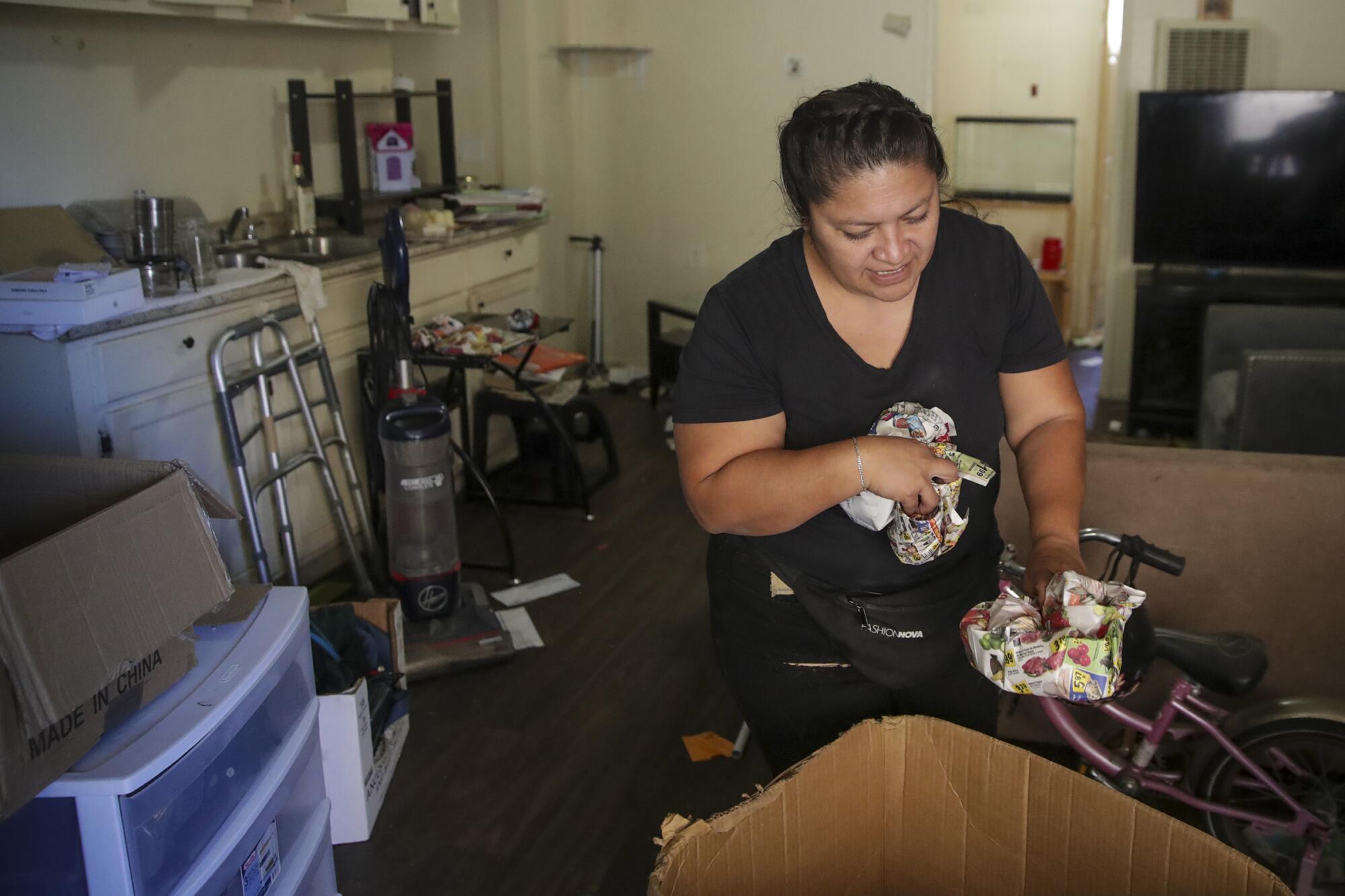
Oceguera’s family was the first to move out into a more permanent home, followed by another family the next day. In the coming weeks, another dozen households affected by the blast — more than 40 people — would also move.
Change won’t come easy. Oceguera must give up clients whose homes she cleans because the pay won’t cover the hour drive to and from Lancaster. Her 14-year-old son, who is autistic, will be starting over in a school where she knows none of the teachers. Her 22-year-old son will drive an hour to get to work in Glendale to help with the rent, until he’s able to find another job nearby.
“I’m really, really hopeful that this change is for the best,” Oceguera said from her new garage, resting a hand on the cardboard boxes she’d used to pack up her life. “I hope to last many years here.”
::
Oceguera moved to L.A. from the Mexican state of Puebla in 2004 in search of a better life.
Housing proved to be a challenge. She and her husband moved from an apartment where they paid $800 to a studio where they paid $1,100. When they moved to a one-bedroom unit to provide more space for the children, rent totaled $1,400.
Oceguera cycled through jobs to help pay the bills: selling tamales outside of a school and hot dogs outside of Staples Center, and working as a waitress at a buffet. Her husband and her eldest son, Jafet, worked installing floors.
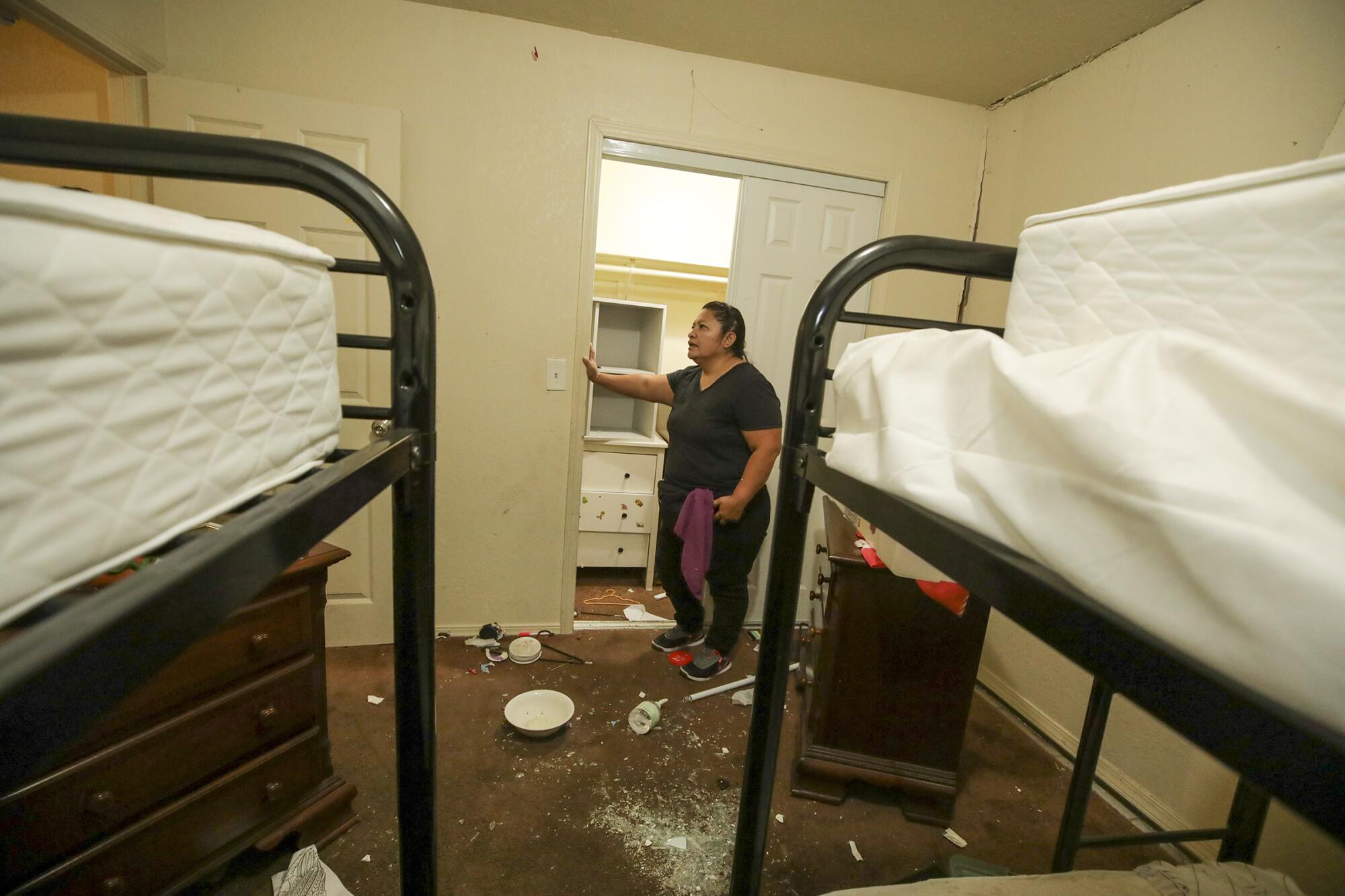
A couple of years ago her husband got sick and couldn’t work. Unable to pay rent, they parked their Chevrolet Silverado on Wilshire and Western and lived out of it for months.
They were able to move into the South L.A. three-bedroom apartment on East 27th Street only through the help of Los Angeles nonprofit People Assisting the Homeless, known as PATH. PATH provided a subsidy to help cover the $2,650 rent.
Three other families in their building had been placed there through the nonprofit. Like others along the street, the Oceguera family lived paycheck to paycheck.
“We were doing the best we could,” said Jafet Martinez Oceguera, Juana’s son.
Then, on June 30, the LAPD badly miscalculated the amount of fireworks they had placed into a containment vessel before detonating them. The explosion ripped through the neighborhood — injuring 17 people and badly damaging homes, businesses and cars.
In response, Councilman Curren Price’s office moved to assist with housing those who were displaced, setting up a $1-million emergency relief fund and eventually booking rooms at the Level, a luxury hotel.

“We never in our lives could have paid to stay here,” Juana Oceguera said.
“We’re humble people,” her husband, Ruben Martinez, added.
They felt ill at ease and judged by other guests whose wealth was apparent in the clothing they wore. At least initially, there were other distinctions between the new residents and others.
Under the initial contract negotiated between the city and the hotel, the residents displaced from the South L.A. neighborhood were not given access to the gym or pool. A revised contract, changed after a Times reporter reached out to the city to inquire about the restrictions, gave the residents access to those amenities.
After the explosion, PATH workers were forced to search for new housing for their four families. They are unable to move back into their apartment building because repairs are being held up by the landlord.

“There’s a level of trauma that exists when you’re homeless to begin with, but when you’re experiencing it again when you think you’re settled — that’s beyond words,” said Tiffany Shirley, PATH’s director of family services.
Oceguera looked at about 40 apartments. There was the $1,800 two-bedroom where she could barely fit one bunk bed, let alone the two she needed for four of her kids. There was a studio for $1,400.
“A lot of people are willing to pay the price to live in L.A. and that makes the price go up,” Shirley said. “When you have a family who is experiencing homelessness, anytime you’re looking at a unit over one bedroom, it increases the challenges because it gets more and more expensive. ... A lot of families do opt to go beyond Los Angeles and look at places like Lancaster and Palmdale.”
“It all boils down to L.A. just being really unaffordable.”
::

For Natalie Quintanilla, an offered move to Palmdale was not an option. PATH had helped Quintanilla move into her apartment on 27th Street about a year ago and she wanted to return to the place where she and her three children “were just starting a new life.”
Instead, because of the lack of communication with the landlord, she would try to find another apartment in L.A. Quintanilla looked at two listings PATH workers had sent, but said one was in a bad area and the other didn’t have parking.
Tired of being in a hotel, Quintanilla was hopeful they’d leave soon. She’d witnessed the effect on her three children. Her 6-year-old son had started telling classmates he was homeless.
One other family displaced by the blast is interested in moving to Lancaster, another to Santa Monica. A family that has already moved remains in the city. They are all being assisted in applying for Section 8 and emergency housing vouchers to help ease the rent burden.
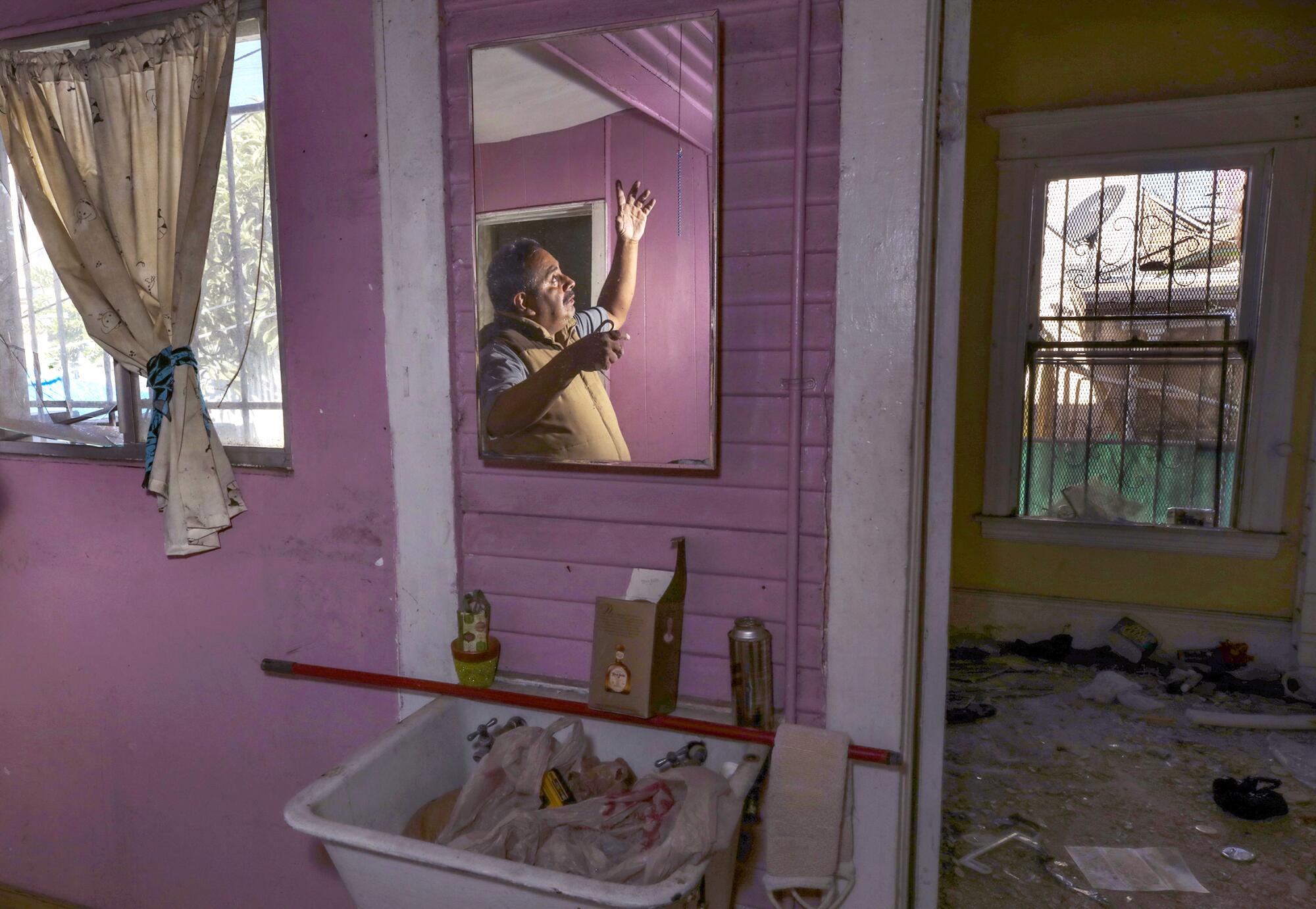
Price’s office is working with local nonprofits, as well as the Los Angeles Homeless Services Authority, “to secure additional housing for these households” and “will be supporting them as long as needed,” said Angelina Valencia, a spokeswoman for the councilman. The office assisted one family with their move and purchased bedding and a dining room set for them.
“Our goal is just to get them into housing as soon as possible,” Valencia said. “We’re trying to do everything we can to make them whole again.”
As of Nov. 5, the city had reached settlements in 71 claims, 49 of which have already been paid and 22 are awaiting signed release agreements from the claimants, according to the city attorney’s office. The city was awaiting more information on 196 other claims.
For some homeowners, leaving the neighborhood is not an option.
On a recent Wednesday morning, as Jose Becerra walked through the home where his family has lived for more than 20 years, glass and wall plaster crunched underfoot. He pointed out the cracked walls and ceiling.
Lotería cards — the hand, watermelon and ladder — papered the floor where Becerra’s 85-year-old disabled aunt had slept. The dates on her June calendar were crossed out, up until blast day.
One of the few things that didn’t break was their portrait of the Virgin Mary. Becerra’s wife had him hang it in front of the destroyed front window. Underneath La Virgen were the words “Nuestra Madre.”
Ten family members, including Becerra’s wife, four daughters, two aunts, an uncle and his sister-in-law, lived in the four-bedroom house. For a week after the explosion, they spent thousands on hotel rooms for everyone.
Becerra faced more bills when his Honda Accord and Ford Windstar — destroyed in the blast — had to be towed from the street. Then there were ambulance and hospital bills for the 52-year-old and his wife, Claudia Silva.
The explosion shattered the house’s windows and hurled glass into Silva’s face, leaving scars to this day.
Although repairs are expected to start on the home in the next week, with a possible Christmas completion, Becerra is prepared for a worst-case scenario. Half of a $10,000 check the family received from the city went toward buying a minivan.
“If something happens and we don’t have anyplace to live,” he said, “I’m going to take out the seats and everyone is going to live here.”
::
“It was the last option we had. Get the house and move far away. We have to start over again.”
— Juana Oceguera
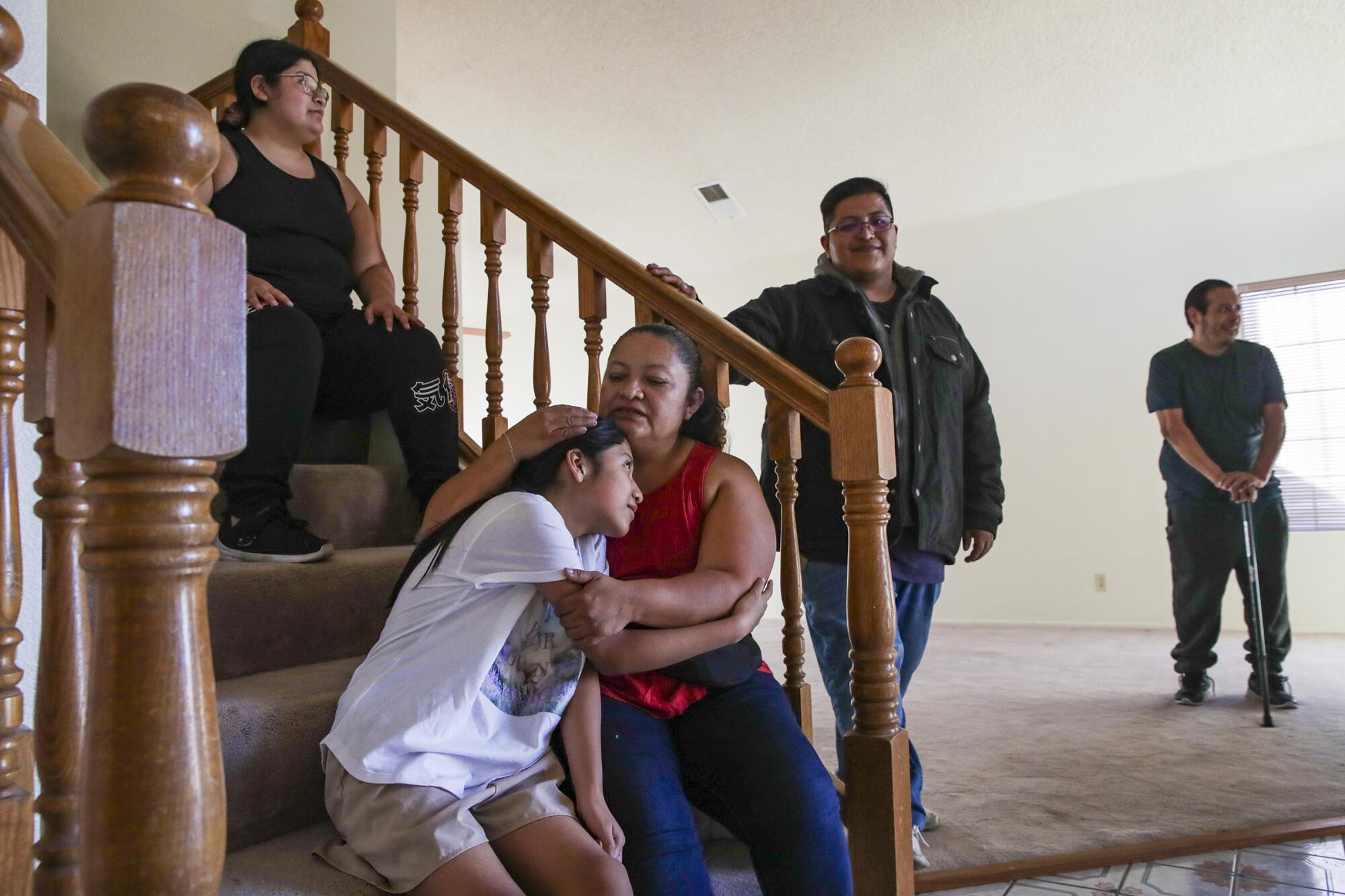
As soon as Oceguera opened the door to the house in Lancaster, after the hour-plus drive from L.A., her children rushed inside. They brought with them two cats, a hamster and a bunny.
There was a fireplace, a carpeted living and dining room and a master bedroom with a closet the size of one of the bedrooms in their old apartment. The total rent was $250 more than their last place, much of which they hoped would be covered through a housing voucher.
Although some of the kids felt strange about leaving the city that shaped them, they were excited to finally have space to themselves.
“I already chose!” Xóchitl yelled as she raced upstairs and into a room at the end of the hall.
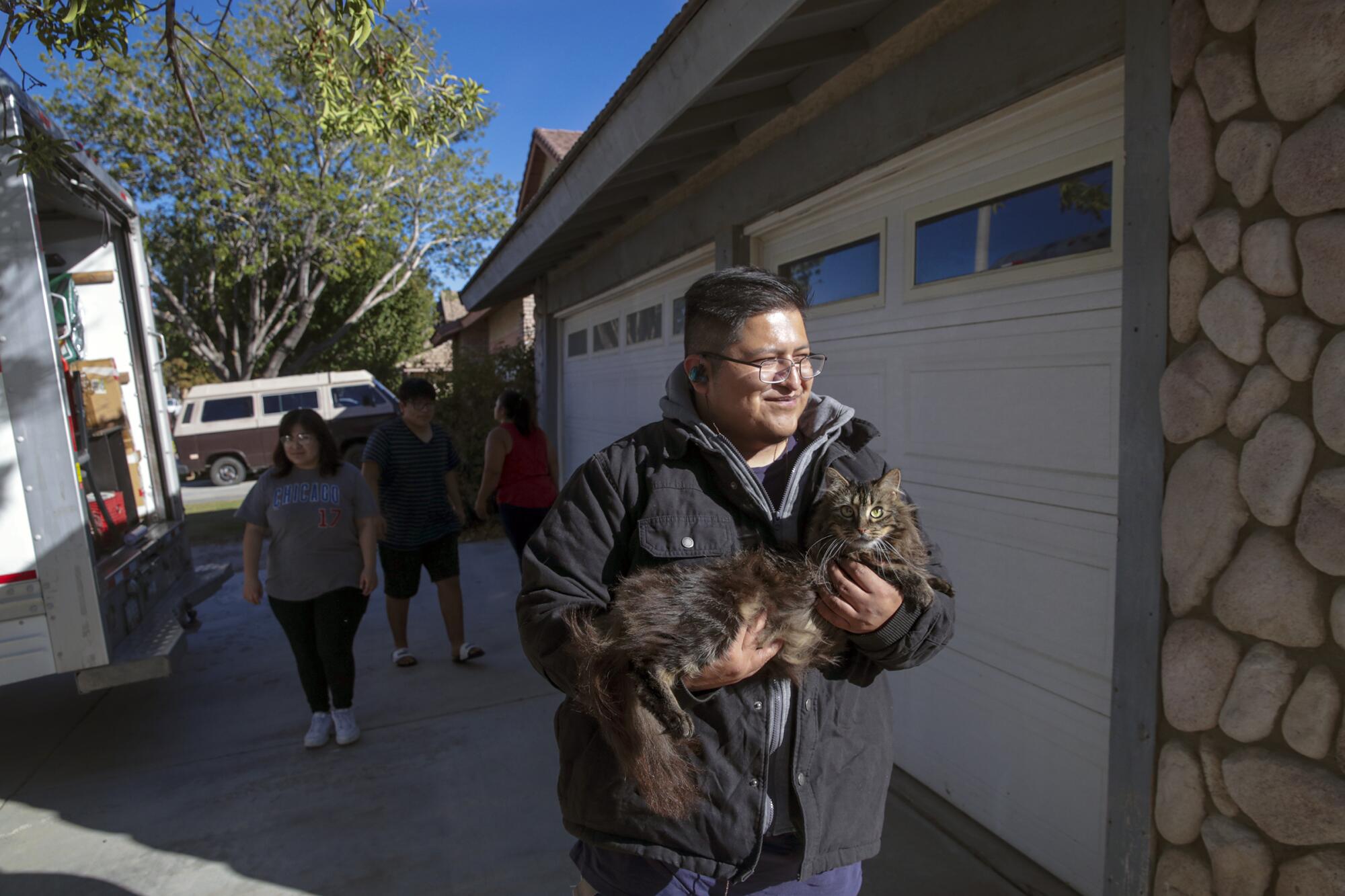
They had a lot left to unpack, and the question of where Oceguera would work loomed large. She’d seen a woman selling corn on the drive here and wondered if she might return to street vending.
But, for now, the question of the hour was where to put the Christmas tree. Jovana Martinez, 18, suggested setting it up in the living room window so it could be seen from the street.
But her mother had another idea.
“No, next to the fireplace,” she said. The family had never had a hearth before.
And after all, she said, isn’t that where Christmas trees are supposed to go?
More to Read
Sign up for Essential California
The most important California stories and recommendations in your inbox every morning.
You may occasionally receive promotional content from the Los Angeles Times.
















